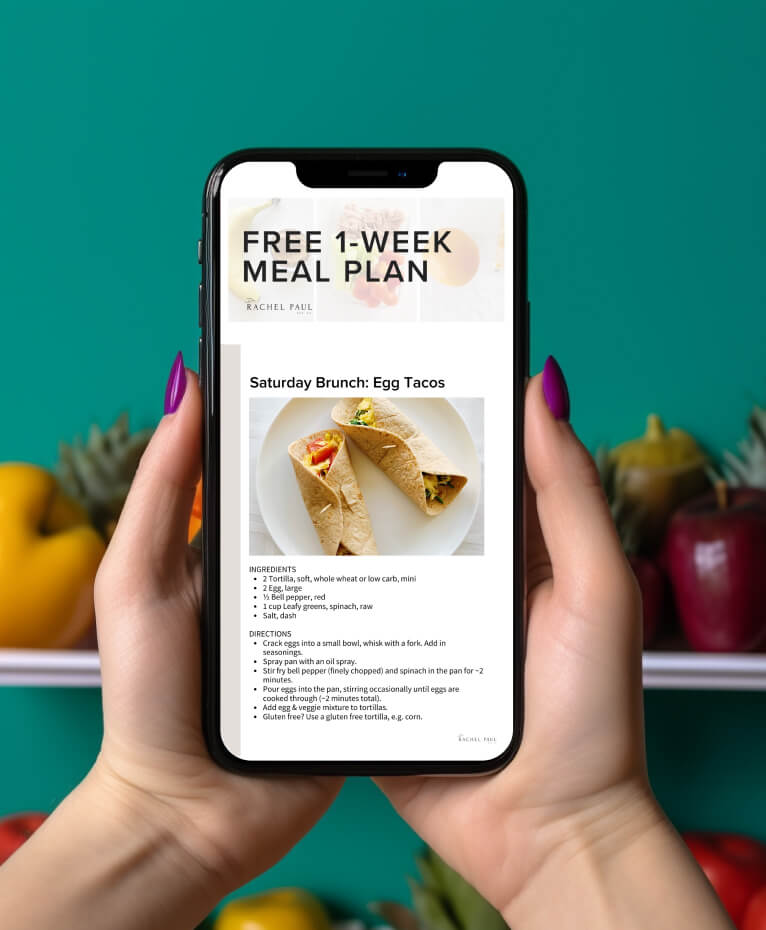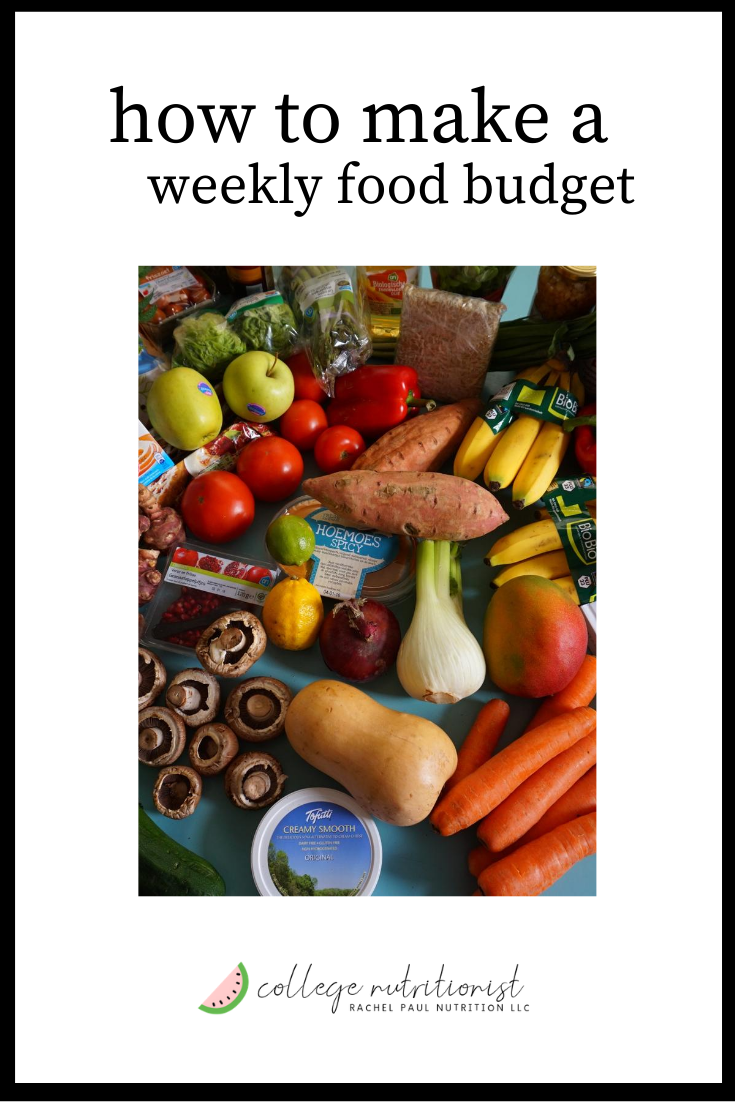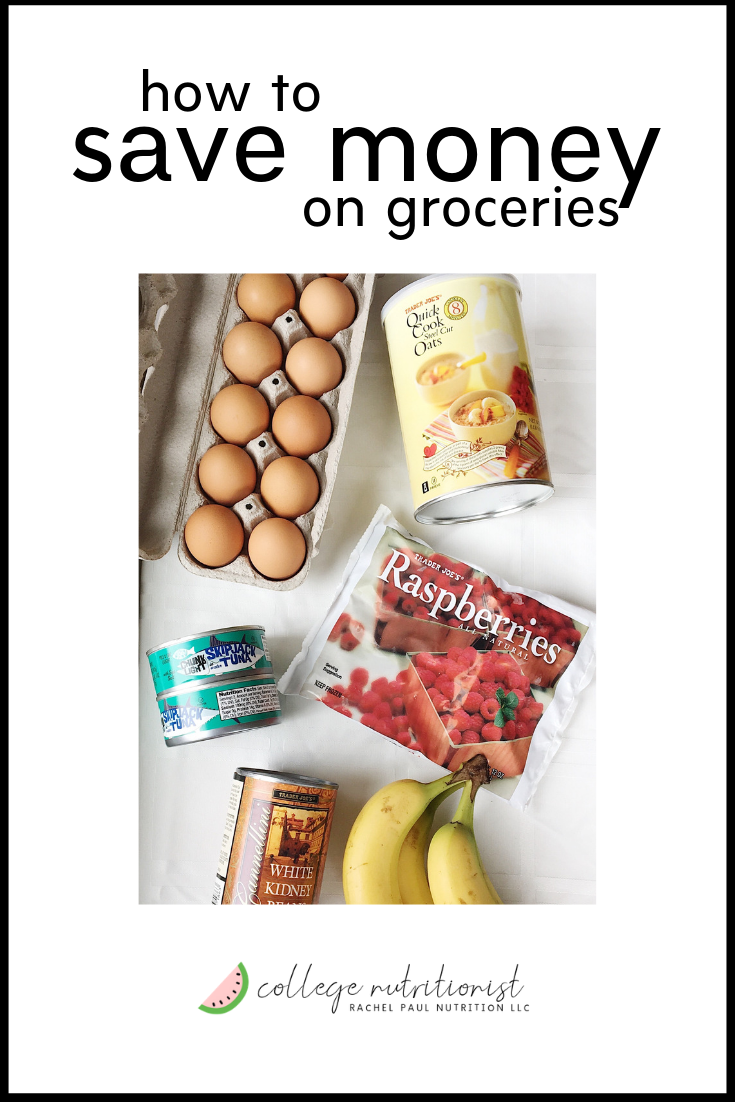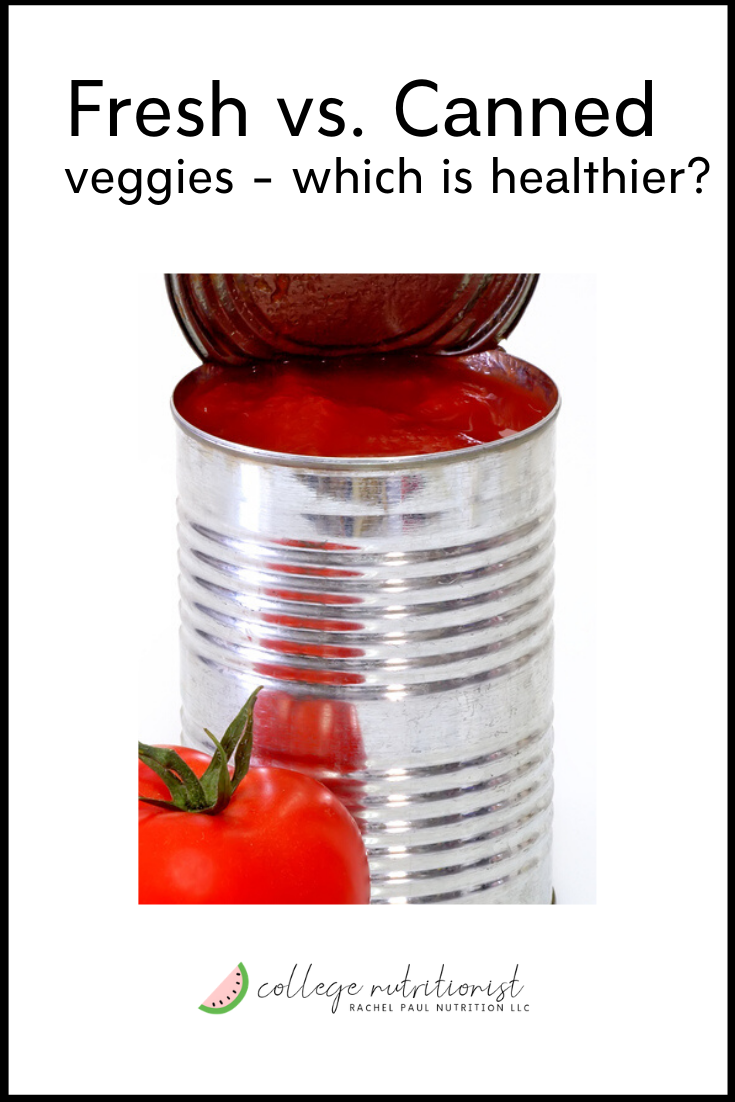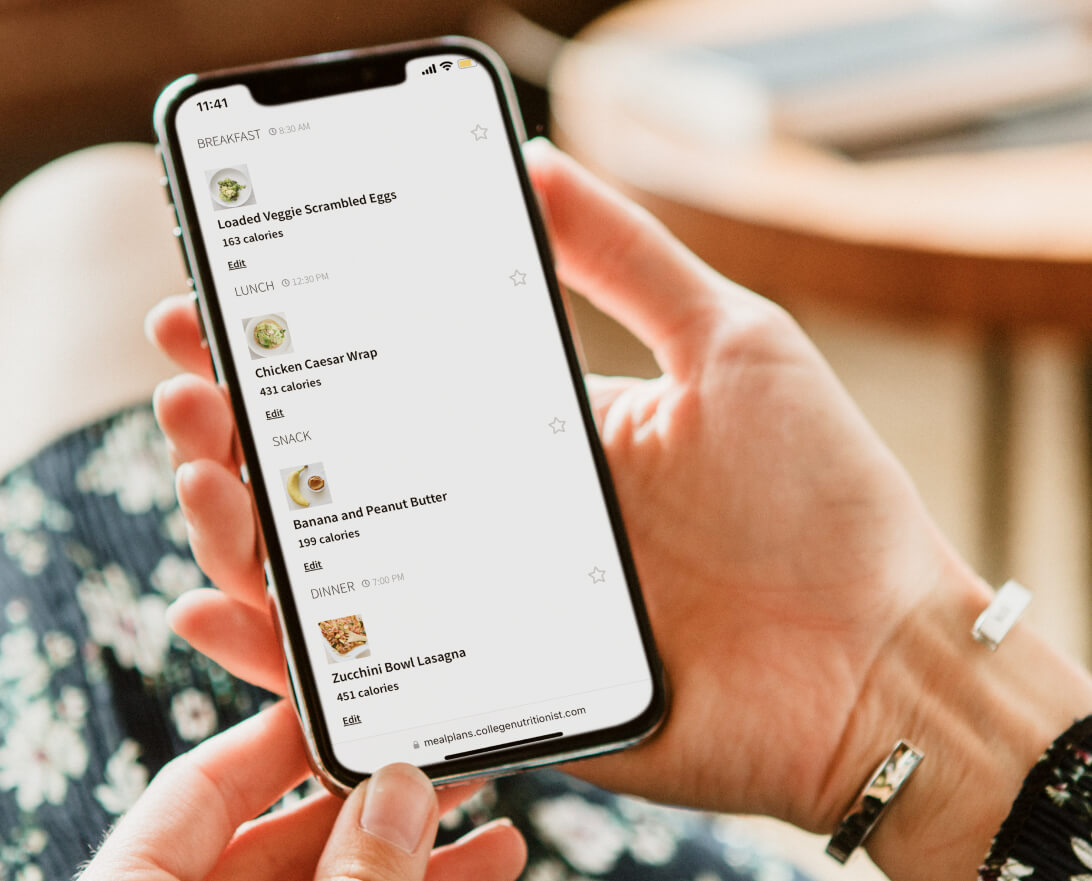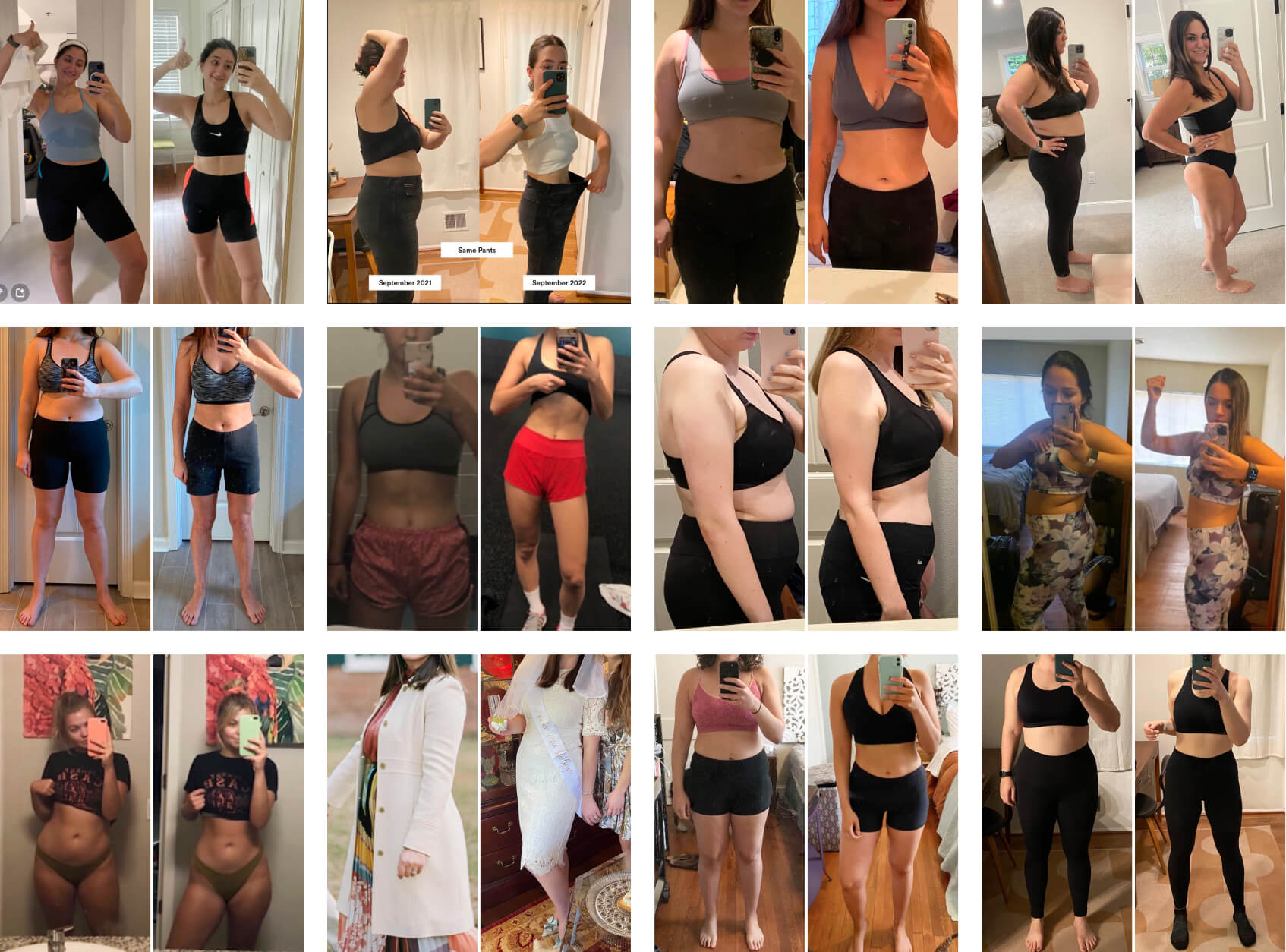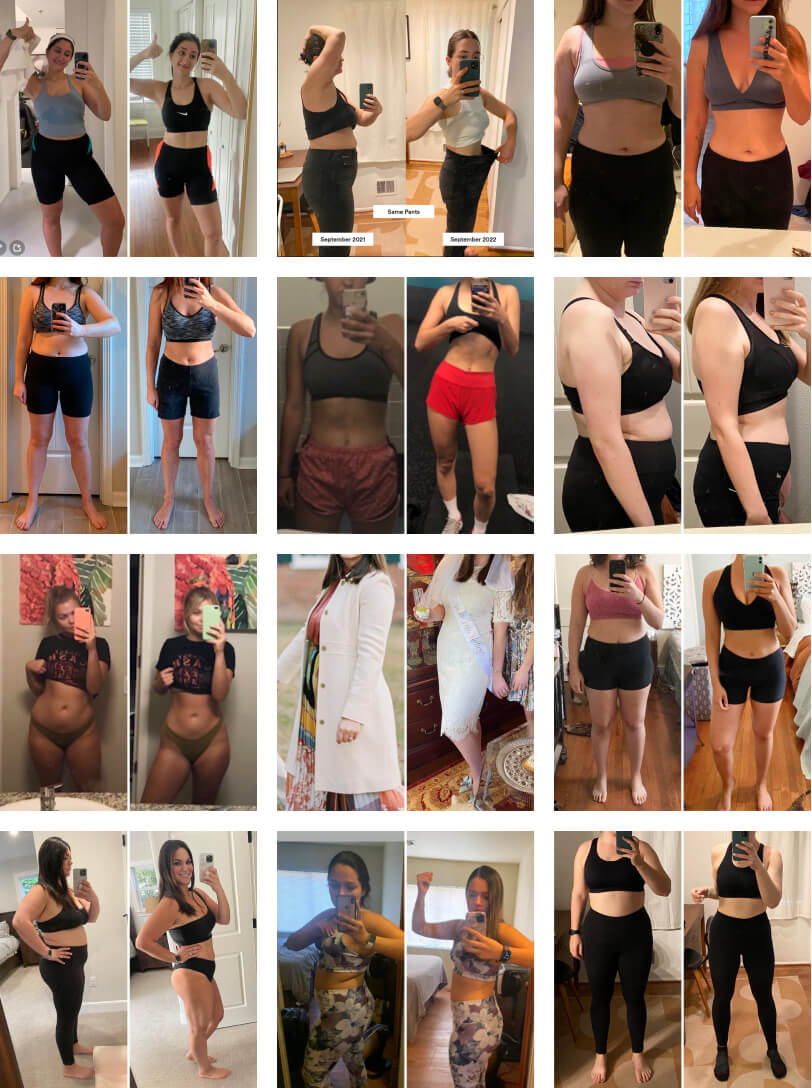
Hi everyone! My name is Becca Booker and I’m a freelance social media manager and lifestyle blogger over on Instagram @bbooks and at accordingtobbooks.com, where I not only give tips on social media management, but I also blog on how to run a freelance business while living a healthy life. Since quitting my full-time job in October of 2017, I’ve quickly had to learn how to stick on a budget, eat well, manage stress, and take care of my skin while I’m home alone and working my butt off haha.
Rachel & I “met” online via a Facebook group for bloggers called “Blogging4Keeps” – I want to say it was a “follow for follow” thread and somehow we both found each other and clicked! I probably have over half of her recipes saved to my Instagram, and love that she focuses on healthy, easy, and affordable eating. Which brings me to…
Budgeting! Yikes. Spending less money doesn’t necessarily get people excited, especially when we’re going to be talking about spending less money on things you buy everyday – food! After having a full-time job to being self-employed, I’ve learned a thing or two about budgeting and I wanted to share with you guys some of my tips.
From grocery store savings to budgeting while eating out, I hope these help!
1. Determine A Comfortable Percent Of Income To Spend On Food
I use app Mint to get an idea of what categories I spend the most in and to get an idea of my spending patterns. Mint has a category for Food that you can further break down into groceries, eating out, and coffee/drinks. In total, most people will find they spend between 6-11% of their income on food in general (USA Today). The key is to grocery shop with your week’s schedule in mind so that you can buy just the right amount of food for at-home meals and to leave any “gaps” in your meal planning for nights you know you’ll eat out.
2. Realize Budgeting For Groceries & Eating Out Will Change Over Time
When I was in college, not only did I have a dining meal plan, but I also had a kitchen in my sorority house where I could cook. At the time, my parents paid for my grocery and eating expenses – so I ate out all the time AND cooked – resulting in a ton of wasted food. Once I graduated & got a job, all finances obviously fell back on me and I started to get much more conscious of how much money I was spending on food.
3. Pay For Groceries With Credit
While I’m not a financial professional, I always pay in credit. Not only do I get points for my purchases (I get flight miles with my Southwest card) but my bank also sends me a year-end statement with my spending for the year in each category. Also, if you use the Mint app (or Mint.com) your spending will automatically sync and you can set up automatic emails to let you know how much you spent in each category from the week before.
4. Staying On Budget WHILE In The Store
Yikes, this one is hard! I would say my grocery bill varies by like $50 each week depending on what I need. Some weeks, when I need to stock up on pricier items like coconut oil and protein powders my bill is over $100. Most weeks, I keep my bill between $50-75. To stay in budget, I would stay always start in the produce section. If you’re mainly stocking up on fresh fruit and vegetables, it’s easy to stay within budget. It’s all those snacks and pre-made food items that will start to add up! I always “splurge” on organic, cage-free eggs, organic cheese, and organic almond milk.
If you live alone like me, I also try to avoid produce that goes bad really quickly (looking at you, raspberries). Especially during the winter months, try to stick to produce like:
Sweet potatoes
Frozen organic green beans
Beets
Apples (granny smith ages the best 😉 )
Eggs
Canned beans
Parsley/basil/cilantro
Gourds
Cabbage, kale, or romaine (on the head)
This will ensure that you aren’t wasting any food that goes bad before you can even eat it!
5. Stick To A Budget Even When Eating Out
There are two “techniques” to consider when eating out: 1) ordering plenty to save for leftovers, and 2) ordering a small soup, salad, or appetizer on the more affordable side. If you’re over 21 and are getting a drink, always ask for the house wine or beer or just order the “well” vodka soda.
If you’re eating with a group, always tell your waiter or waitress prior to ordering that you intend to split the bill. This will avoid that awkward “let’s split it evenly!” convo when you just ordered an appetizer.
6. Know When To Buy Organic
I try to buy organic whenever possible! If I can’t buy organic, then I just stick to the dirty dozen’s guide and at least try to avoid that produce if I can’t find it as an organic option.
7. Freeze Your Produce Before It Goes Bad
If you can’t use it all before it goes bad, always remember most foods can be frozen! For example, I’ll peel and half my bananas and them freeze them for smoothies. Same with fresh spinach and zoodles! Both can easily be kept in the freezer and cooked or added to a smoothie later.
8. What are your Favorite Websites or Apps for Budgeting in General?
Mint – Full budgeting and financing tool with both app and desktop versions. Automatically syncs with all of your purchases to easily stay on budget and track spending trends.
Honey – Is a Google Chrome Extension that notifies you every time you’re on the checkout page of a website of any potential coupons that may bring the cost of your order down.
Drop List – Add online items to your ‘watch list” to be notified if their price is lowered!
Flipp – Helps you price match to ensure you’re getting the best deal
Target App’s Cartwheel O
ffers – Search for coupons for items in the Target store to redeem at checkoutAmazon Pantry – An exclusive benefit for Amazon Prime Members that allows you to shop a wide range of items including heavy and bulky items in regular pack sizes that are often costly to ship.
I hope these tips are useful (and practical) in helping you budget with food! Remember, there’s no “one-size-fits-all” solution to saving money, so try different things out and keep what works for you.
Thanks for reading, and thanks to Rachel for having me contribute! You guys can find me (and ask me any questions) at www.accordingtobbooks.com and on Instagram at @bbooks.
XX Becca

